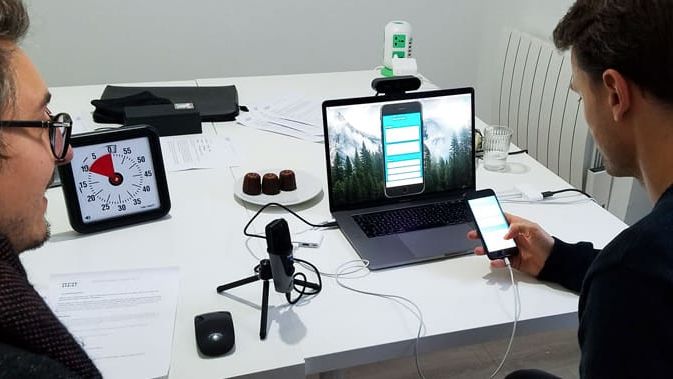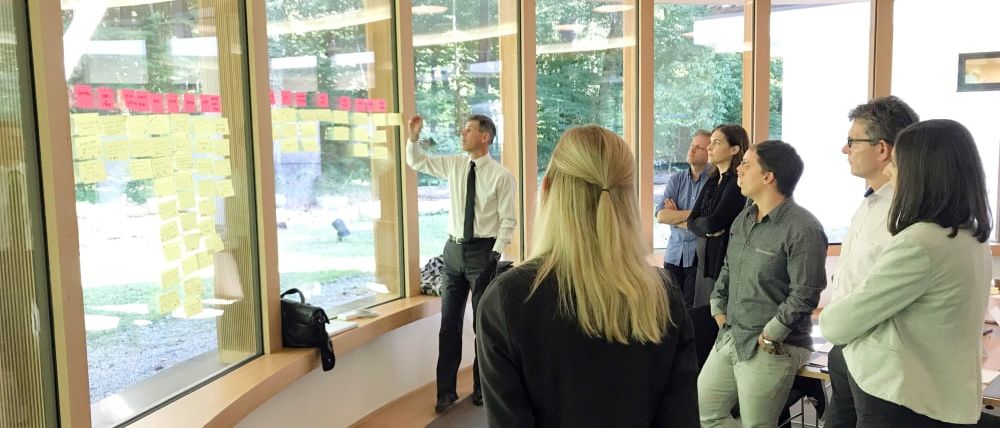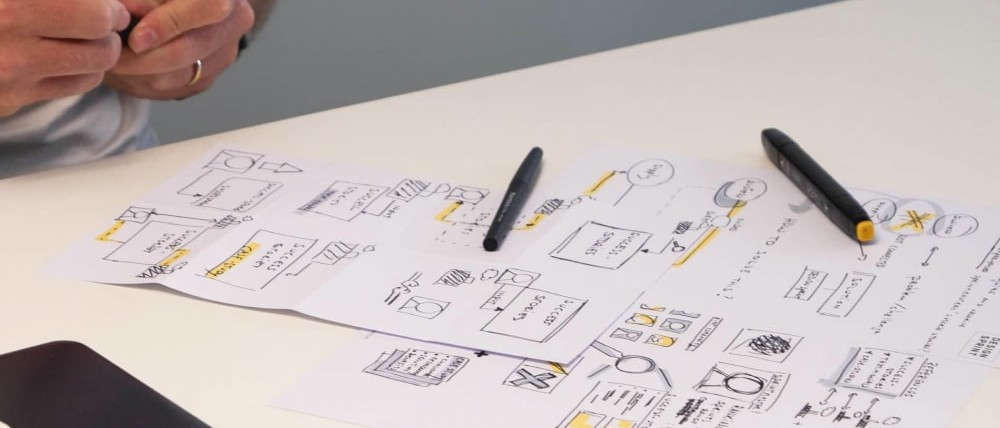Usertests
The tests can be performed either in 1:1 face-to-face or remotely using Zoom or Skype for example. Each session is recorded and can be shared if needed. The tests last approximately 40 minutes per participant. Contrary to some scientific practices used by user research specialists (eyetracking, AB testing, click testing…) our tests will be extremely simple and pragmatic. We will simply put our testers in front of the prototype and we will lead them through a scenario, without giving them too much guidance.
We will ask them mostly open questions in order to let them express themselves as much as possible and to bring their own ideas. This is often how the most interesting lessons emerge.
We will carefully observe their verbal and emotional reactions, “pain points”, ergonomic problems…
We will also question them about the purpose of the product or service in order to validate its business model. As potential users, would they want to use this product? How much would they pay to use it? How could it be improved? etc
The tests are filmed, which allow to study in detail all the reactions.
A few minutes of testing with a neutral user will reveal most of the flaws or potential for improvement: remember, the prototype doesn’t have to be perfect, it must above all help you create the real product and avoid the pitfalls inherent in the creation of an innovative product or service.
Watching tests and filling up the scorecard
Whether live or replayed in the afternoon, the entire team watches the tests and scores the testers’ reactions and responses using a Scorecard (an evaluation grid). This is a tool we have created that allows everyone to capture their learnings and annotate their results in an unbiased way.
What's the result for the Sprint?
✅✅ Success!
It sometimes happens that we can validate most of the assumptions, and testers approve the concept on the first go. In this case, it is possible to consider launching the execution phase directly after the sprint (product or strategy development, coding, or service implementation).
✅❌ Mixed results
Sometimes our scorecard will have as much red as there is green. In this case, we will identify what has worked and determine what should be improved. What the testers did not like, should either be removed from the concept or reworked.
❌❌ A flamboyant failure
Fail fast! Sometimes testers invalidate the concept. This scenario is probably the most valuable result since it is a clear sign that you must not continue with this concept. It is better to receive bad news after five days rather than after two years of development.
In all cases
Design Sprint is an exceptional experience that will help you unite your team around a common vision of your future product. It is also an excellent introduction to the world of UX Design and User Centered Design. Don’t waste time, it’s time to organize your Design Sprint.
| In the morning: 5 user tests will have been conducted by Design Sprint SA. |
| 14:00 The whole team gathers to discover the videos of the Tests. |
| Discussions on the strengths and weaknesses of the prototyped solution. |
| Answering Sprint Questions, Planning Next Steps |
| Sprint Scorecard |
| 17:30end of Design Sprint! 🎉 |
The Design Sprint
Need help to convince your boss?
Discover our slidedeck 👇
Let's sprint together
We’re based in Lausanne Switzerland 🇨🇭, and we work internationally.
Ready to take action and accelerate your innovation?
Let’s organize your next Design Sprint together starting today!













